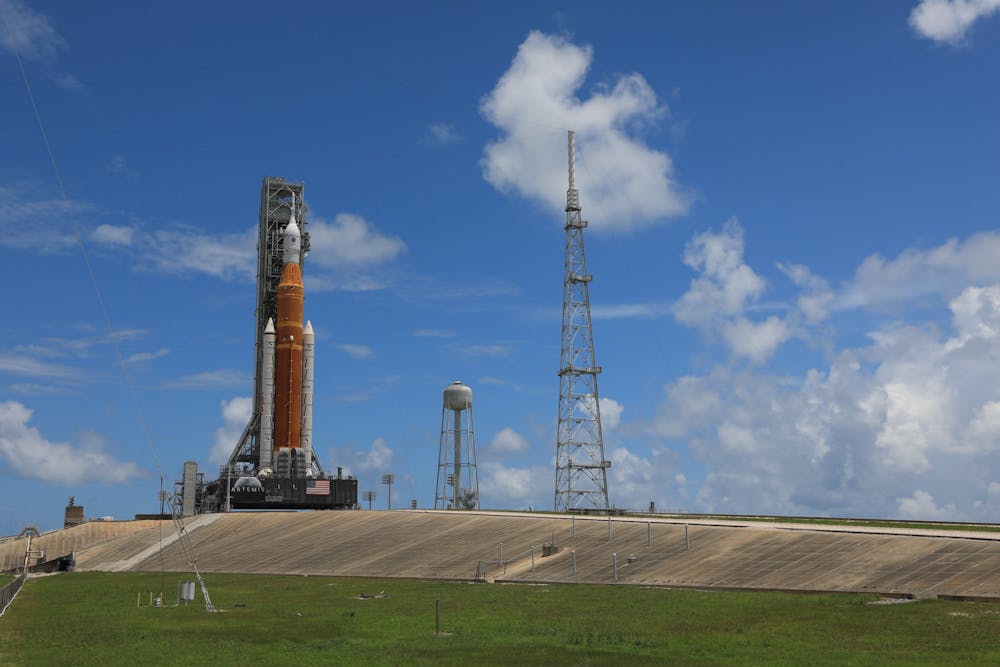By Aneri Upadhyay
Staff Writer
NASA’s Artemis Ⅰ mission has once again been delayed due to hazardous weather conditions. Originally meant to launch Nov. 14, the rocket will now be prepared for Nov. 16, however more delays may prevent the mission from occurring before that deadline.
The Artemis mission is the first step of the greater Orion mission, in which NASA will launch a rocket to and from the moon with hopes of eventually sending more people to the moon. The current mission will be uncrewed and tracked by volunteers, according to NASA. Eighteen participants will help track the mission using antennas and radio waves.
NASA hopes that through this Artemis mission and future ones, they can land the first woman and the first person of color on the moon and eventually maintain a permanent residence there. Having people living on the moon would also make potential future missions to Mars easier.
“We’re going back to the Moon for scientific discovery, economic benefits, and inspiration for a new generation of explorers,” stated Jim Bridenstine, a NASA Administrator. “As we build up a sustainable presence, we’re also building momentum toward those first human steps on the Red Planet.”
NASA’s plans have been postponed due to trouble from Tropical Storm Nicole, which recently hit Florida, home of the Kennedy Space Center where the launch is scheduled to take place. The postponement was due to unsafe conditions for both the working crew and their families along with the trajectory of the rocket itself as stated by NASA.
Before the storm, the spacecraft was powered down and engineers made sure to take the proper precautions to prevent damage due to the weather conditions. According to Space.com, the rocket can also withstand winds of up to 85 mph and heavy rains due to security measures taken to prevent water from getting into the rocket.
Despite the precautions, however, minor damage, such as a torn engine rain cover and water intrusion, still occurred because the rocket was left outside overnight during the storm as reported by Fox 35. Some damage has been repaired already.
According to Fox 35, Jim Free, NASA's Associate Administrator for Exploration Systems Development, stated in a teleconference that “there's nothing preventing us from getting to the 16th. We do have some work to do.”
Nonetheless, with the launch now delayed, concerns are raised over if it will happen before the quality of the rocket’s hardware decreases. Once the rocket got assembled, a timer was set to mark how long the crew had to launch it. Different parts of the rocket have different expiration dates, which also affects how much time the crew has.
As reported by Space.com, Cliff Lanham, senior vehicle operations manager of the Exploration Ground Systems Program at KSC, told reporters that, “One piece expires on the ninth of December of this year, and the other one is the 14th of December of this year.”
It is imperative that the launch occurs before any part of the rocket reaches its expiration. The rocket has already been previously delayed due to faulty sensors and a liquid hydrogen leak according to ABC.
NASA is confident with its new Nov. 16 launch date. If there are no more delays and the launch occurs on Nov. 16, then the craft should come back on Dec. 11. NASA has a back-up date on Nov. 19 if needed.







